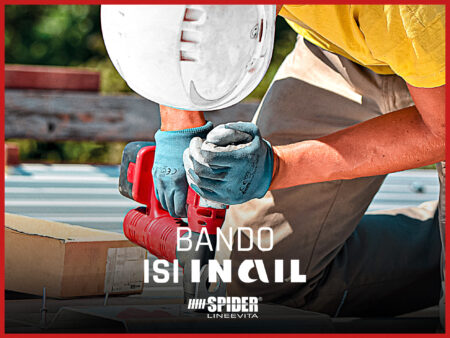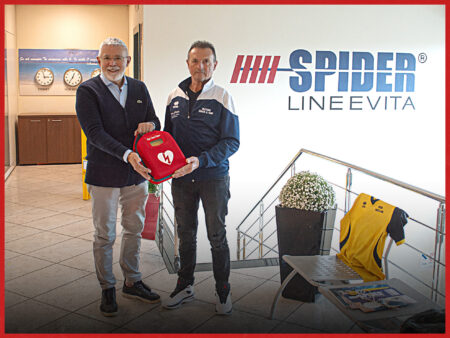The lifeline is a safety device used to protect people from accidental falls from height. We have dealt with the standards and the various applications but we reiterate some fundamental concepts.
It is a safety rope, made with cables, ropes or other abrasion resistant materials, which is fixed to the surface in order to provide an anchor point for the user. The lifeline can be used in tall buildings, such as skyscrapers or oil rigs, or on scaffolding and other temporary structures.
Additionally, the lifeline can be easily removed when it is no longer needed. Using the lifeline guarantees a higher level of safety in environments where accidental falls from heights may occur.
If you are looking for solutions for your case, write to us by filling out the form below.
The lifeline is a safety device used to protect people while working at height. It is a system made up of a series of anchors joined by a rope fixed to a harness worn by the user. The lifeline can be used by all those who have to work at least two meters above the ground, such as bricklayers, installers, building maintenance workers, acrobats and other professional figures who have to work at height.
To ensure that lifelines are designed and installed correctly, they must be made by qualified professionals. In Italy, the law provides that only a qualified designer can design a lifeline. The licensed professional must be able to demonstrate that they have the skills required for the project, either through a university degree or a certificate issued by a recognized institution, or through documented experience in the field. Through all phases, specialized companies such as SPIDER® mostly supply a complete procedure and qualified technicians who accompany and assist the client in all phases.
Getting proper advice is always a great start.
It is always necessary to ensure that the lifeline is suitable for the environmental context and the conditions foreseen for the installation, and to be able to offer advice on the appropriate use of the various technical solutions available. It should also periodically verify the correct installation and maintenance of the lifelines and provide instructions on how to use them appropriately.
The solution is always influenced above all by physical factors inherent to the material on which it will have to be applied and which, combined together, could require a more in-depth study and design level.
The installation of the lifeline must be carried out by specialized and qualified personnel, expert in the use of all the necessary tools and equipment. It is one of the aspects that the workers in charge of laying the lifeline must demonstrate competence in the use of safety equipment and have technical knowledge and experience in the management of fall arrest devices. Furthermore, they must possess a fire-fighting qualification certificate issued by a competent body. These people must also be in possession of adequate training, which includes all the rules and regulations concerning safety at work, as well as the procedures relating to the correct assembly and maintenance of the lifeline.
The lifeline is an anchoring system made up of one or more ropes which serve to prevent falls from a height. To ensure the safety of people working at height, it is important to have the lifeline checked periodically by qualified personnel. The certification of the lifeline can only be carried out by qualified professionals, such as a specialized engineer or by the qualified personnel of an authorized safety company. During the certification, the technician will evaluate the state of wear of the ropes and components, as well as their compliance with the requirements set by current legislation. Once the correct installation has been verified, he will issue a certificate with the information necessary to demonstrate that the lifeline has been checked and is suitable for use.
The lifeline, once the installation has been completed, or possibly if already present, and regular maintenance has been carried out, is ready for use. There are various accessories and tools that are useful in different situations. In order to use it correctly, there are suitable courses, useful both for understanding the tools and the movements for access (with reference to the environment on which the lifeline has been laid) and hooking up to it.
 Agevolazioni
Agevolazioni  Events
Events